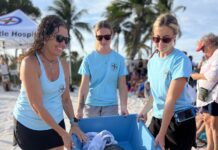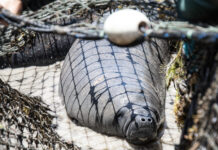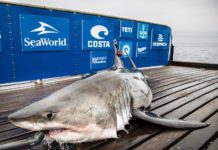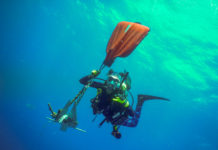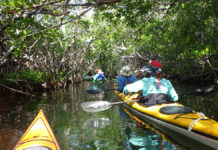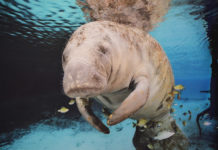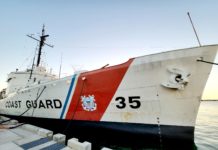Having a variety of rods and rigs ready on your boat is key in working with the unpredictability of fishing. Some days the tuna just won’t bite. Other days you can search the ocean for hours and still not find a pack of dolphin. That’s why we call it fishing, and that’s why it’s essential to always have a backup plan.
If you’re heading offshore in search of mahi-mahi, take a few trolling feathers and butterfly jigs along as well. That way if the dolphin fishing is slow, you can still make up for it by putting a few blackfin tunas in the fish box. You can troll or jig at the Marathon Humps, and you’ll be ready to put out the feathers if you come across a pack of tuna birds while searching for your dolphin.
Always keep a few rods on board rigged with swivel clips that you can quickly switch out for rigged ballyhoo or trolling lures, depending on the situation. Have a few rods set up for different fishing techniques, and switch things up if you’re not getting the bites. Weather patterns, wind speed and direction, etc., all influence fishing, and sometimes the species you want to target may not be biting that day. Talk to your local fishing guides and tackle shops to find out what’s biting best. The Florida Keys are home to many of the best fishing captains in the world, and they want you to catch fish. Take their advice, and you’ll have an awesome day on the water.
There are dolphin offshore, you just have to spend some time looking for them. But when we did find them, fishing was great. Most of the dolphin we found were from 10 to 18 miles out, scattered throughout areas of thick weed lines and on floaters. If you’re heading out this week plan to run and gun until you find the fish. Don’t spend your entire day working a weed line or certain area. If you’re not getting the bites within the first 30 minutes or so, move on to the next promising area, get the baits out, and see what happens. There are fish out there, you just have to put some time in to find them.
On the humps, the tuna fishing was also really good at times this week, and at other times quite slow. If heading to the hump try trolling, jigging, and live baiting to find the fish. If you’re having trouble getting the tuna to bite, another idea is to drop a bait or chicken rig down to the bottom on an electric reel, or with a hand-crank if you want a good workout. All sorts of species hang out in the depths of the Humps, including snowy groupers, queen snappers, and giant amberjacks, just to name a few.
Another idea to try if the dolphin and tuna fishing is slow is daytime swordfishing. The swordfish bite has been solid all summer, and there’s nothing quite like battling one of these great fish up from the bottom in 1,600 feet of water. The other great thing about swordfishing is you get to search for dolphin on your way out to the sword grounds, and on your way back in. It’s not uncommon to come home from a swordfish trip with a fish bag stuffed with a nice sword, and a pack of slammer dolphin.
First Mate Tim Thieman aboard the Stim Star out of Key Colony Beach Marina, caught a 305-pound swordfish last week during their daytime trip.
Fish continue to be plentiful on the reef. Mangrove snappers have been biting steadily for the past three months. We’ve been catching them in depths from 30 to 50 feet of water. For targeting mangroves, take along small pinfish or throw the cast net on the ballyhoo swimming up in your chum slick. If live bait is not an option, cut up some ballyhoo to attract the fish. If you don’t throw a cast net, try catching them with a hair hook tipped with shrimp while you’re anchored on the reef. While fishing for mangrove snappers, you’re likely to come across a couple mutton snappers and plenty of yellowtail snappers. So have a few rigs set for catching them as well. It’s always a good idea to have a bottom rod down with a bigger live bait while you’re anchored up catching snapper, since there’s always a few grouper in the area.
Capt. Ariel Medero is the captain of Big Game Sportfishing, located at the Hammocks of Marathon, MM 48. For more information, check out his web site at www.biggamesportfish.com or email him at captainarielmedero@yahoo.com. Friend him on Facebook, too.














